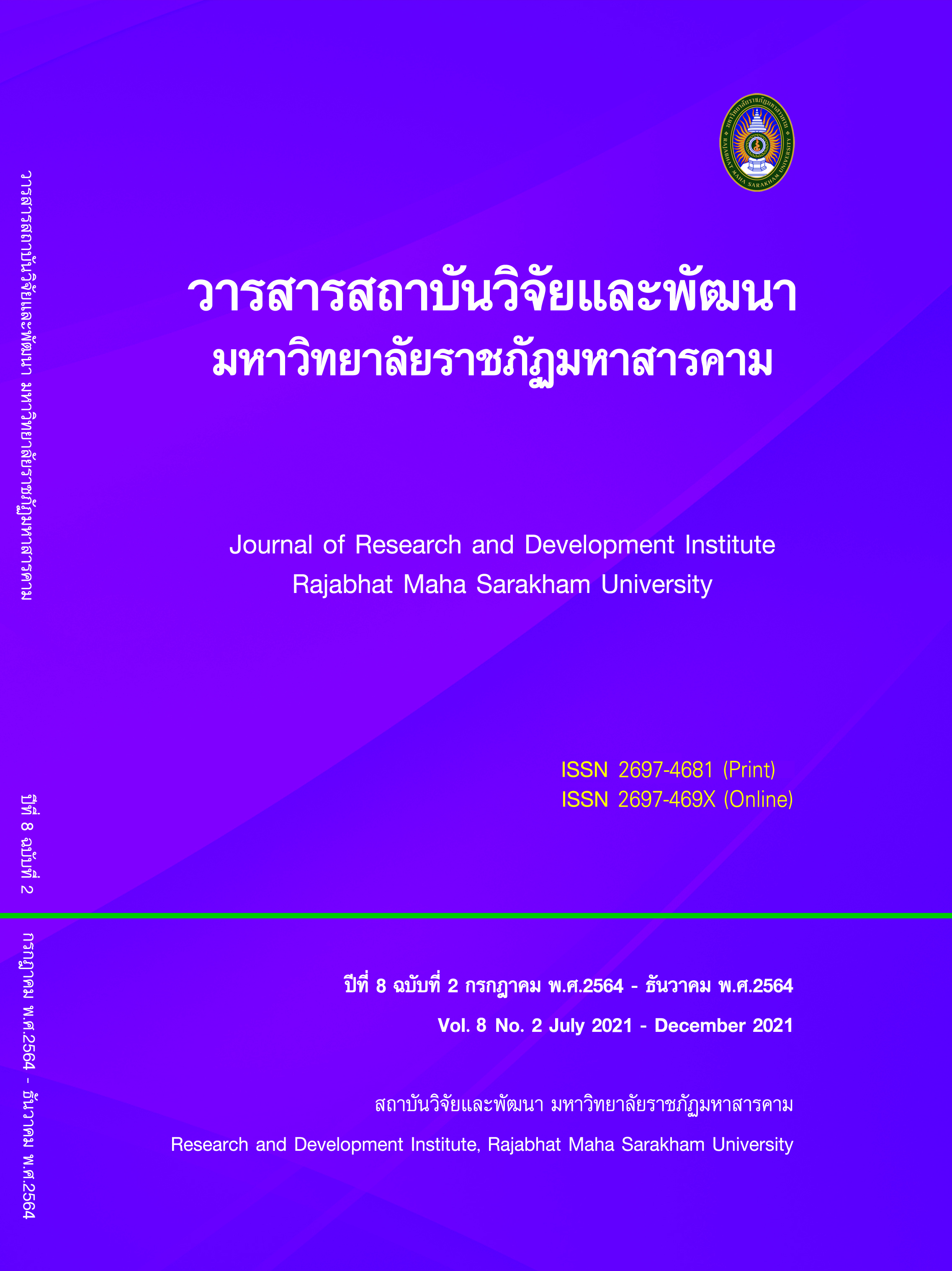Guidelines to Curriculum Improvement of Integrated Instructional with a Working in Innovative Technology Machinery Program (New Curriculum A.D. 2020), Faculty of Agricultural Technology, Rajabhat Maha Sarakham University
Keywords:
Curriculum Development, Work Integrate Learning (WIL), Innovative Technology MachineryAbstract
The aim of this research was to develop the Bachelor of Science Program in Innovative Technology Machinery based on the work integrated learning approach. The data collection deployed an in-depth interview with faculty members in charge of the program, experts from other universities who hold expertise or qualification related to the program, and executives from businesses. The curriculum development procedure involves documentary analysis, collecting data by questionnaire, in-depth interview, and reviewing the curriculum together. The data was synthesized to draft the curriculum and assess the feasibility of the program. The curriculum review indicated that the developed curriculum comprised objectives, desirable characteristics of graduates, program structure, program content, instructional activities, assessment and evaluation. The program concentrated on 5 desirable characteristics i.e. (1) Morality and ethics (2) Knowledge (3) Cognitive Skills (4) Interpersonal skills and responsibilities and (5) Numerical analysis, communication and information technology skills. The curriculum structure consisted of general education courses 30 credits, specialized courses 86 credits, and elective courses 6 credits that accumulated the total of 122 credits. The program is consistent with the Standard of Higher Education Curriculum A.D. 2015 and related standards.
References
Abeysekera, I. (2006). “Issues relating to designing a Work Integrated Learning (WIL) program in an undergraduate accounting degree program and its implications for the curriculum” Asia-Pacific Journal of Cooperative Education, 7(1), 7-15.
Chinintron, P. & Plaimart, W. (2010). Success factors of Work-integrated Learning (WIL) on higher education in Thailand. The Proceedings of 7th Kasetsart University Annual Conference (pp. 1056-1063). December 7-8, 2010. Kasetsart University, Kamphaeng Saen Campus, Thailand.
Franz, J. (2007). Work Intergrated Learning for Design: A Scholarship of Integration. The Proceedings of International Conference on Design Education (pp. 1-4). July 9-12, 2007. University of New South Wales, Sydney, Australia.
Homanek, W., Srisakun, Ch., & Intuluck, W. (2017). “Guideline for development of workforce in MICE industry regarding the context of education 4.0” Dusit Thani College Journal, 11(special issue), 333-347.
Kramer, M. & Usher, A. (2011). Work-Integrated Learning and Career-Ready Students: Examining the Evidence. Higher Education Strategy Associates, Toronto, Canada.
Martin, A.J., & Hughes, H. (2009). How to make the most of Work Integrated Learning: A Guide for students, lectures & supervisors. Massey University, Palmerston North, New Zealand.
Smith, C. (2012). “Evaluating the quality of Work Integrated Learning curricula: comprehensive framework” Higher Education Research and Development, 31(2), 247-262.
Downloads
Published
How to Cite
Issue
Section
License
Copyright (c) 2021 Journal of Research and Development Institute Rajabhat Maha Sarakham University

This work is licensed under a Creative Commons Attribution-NonCommercial-NoDerivatives 4.0 International License.
Articles that are published are copyrighted by the authors of the articles







